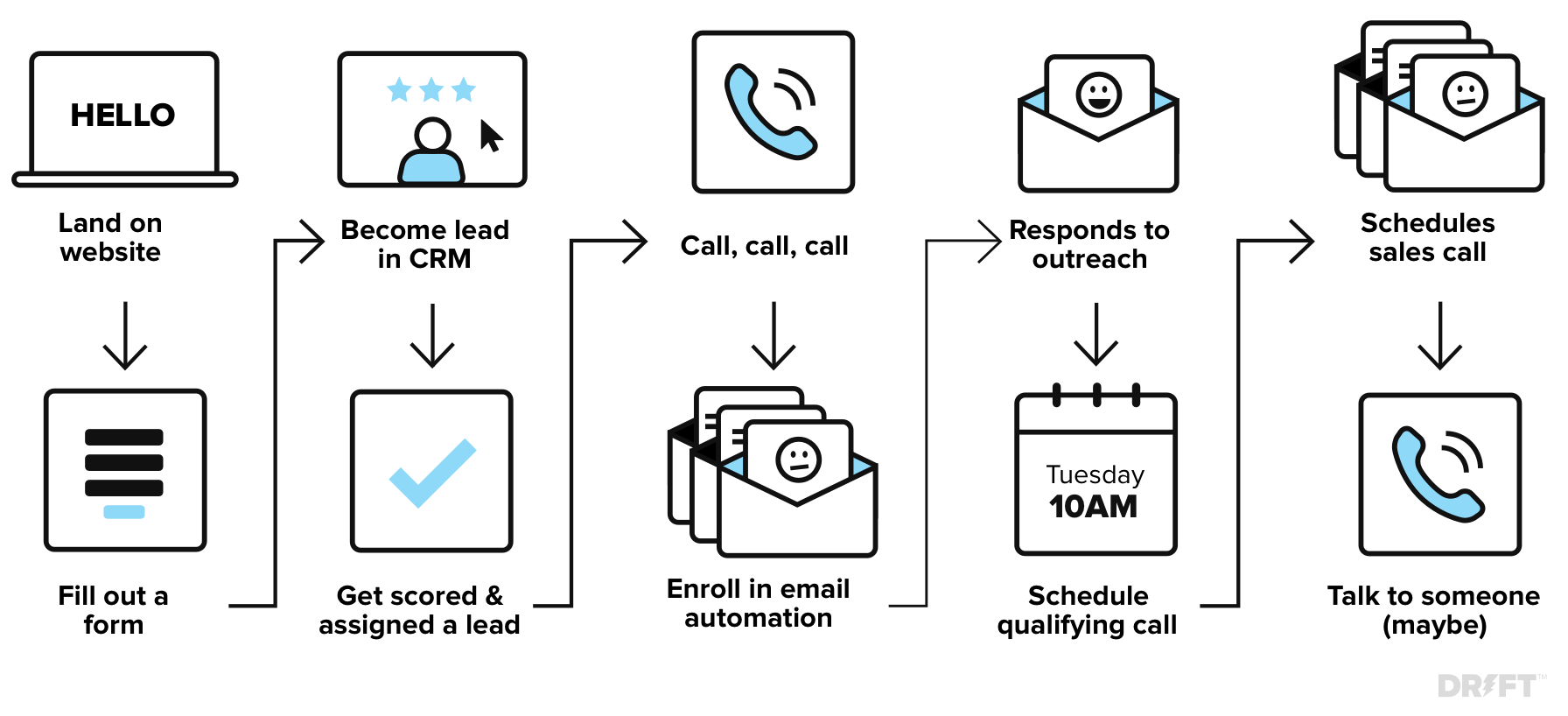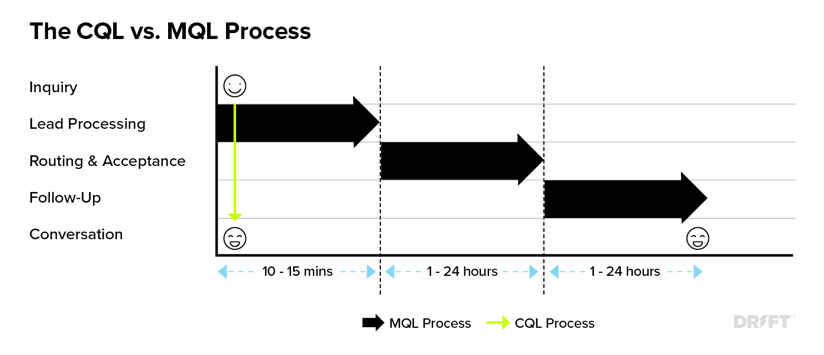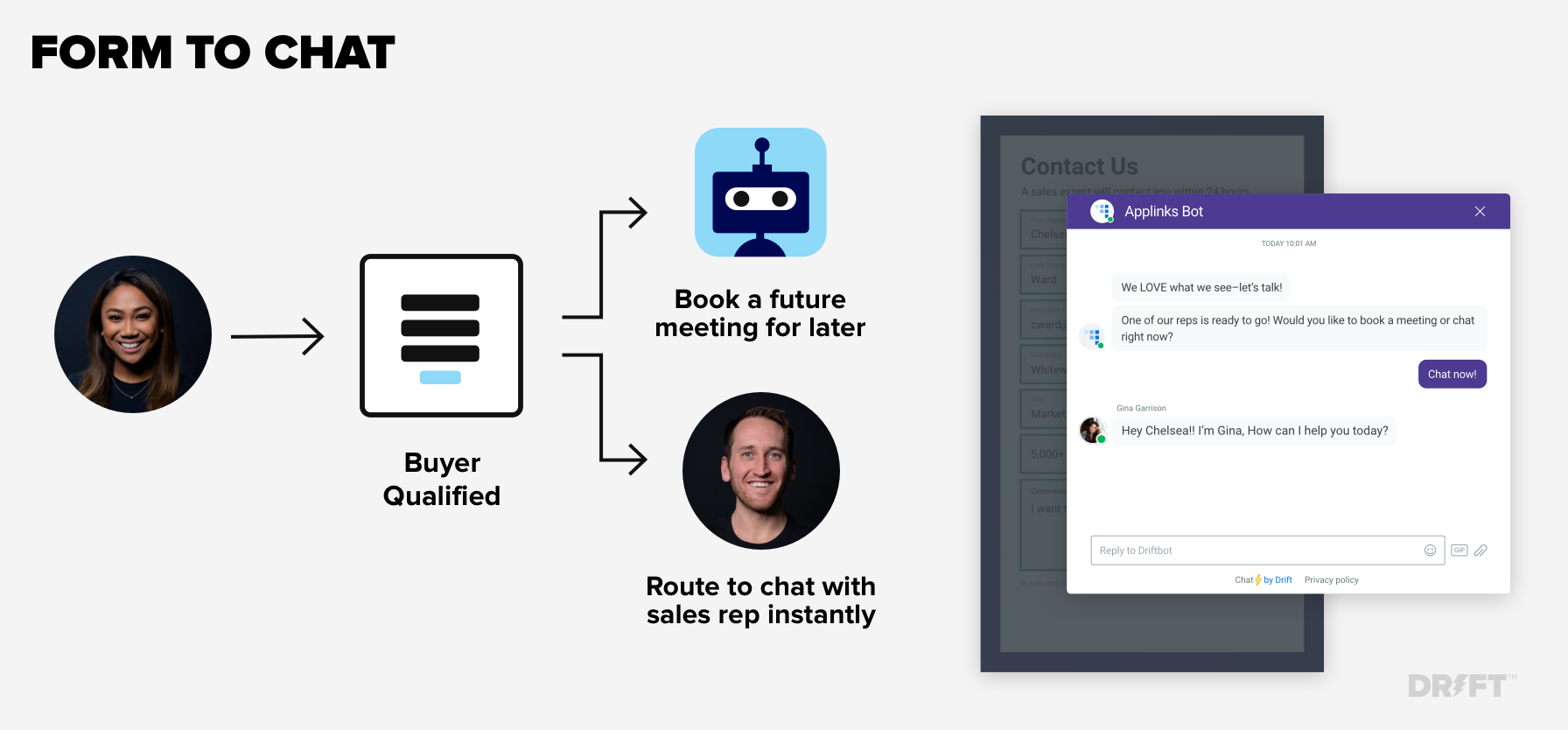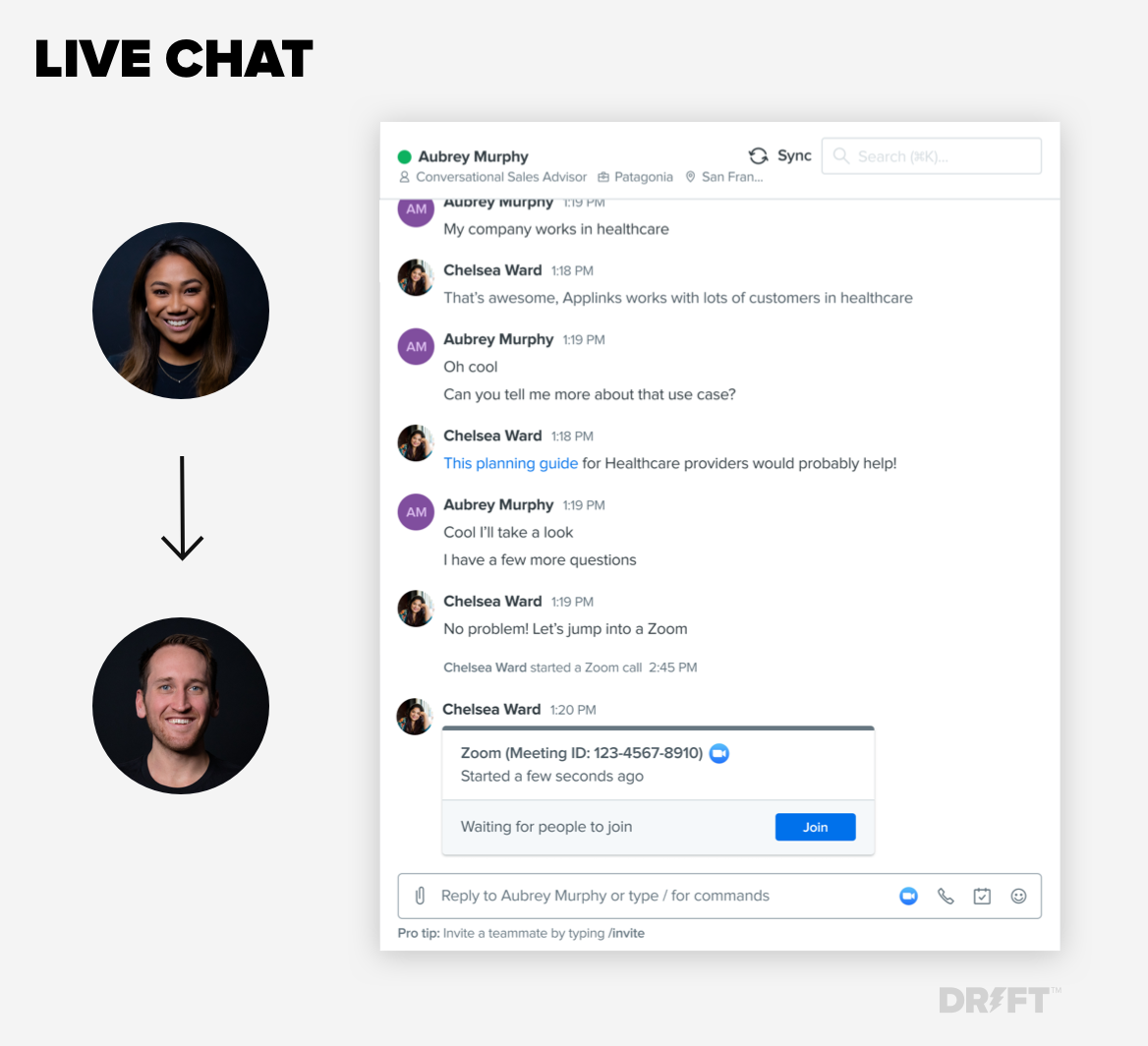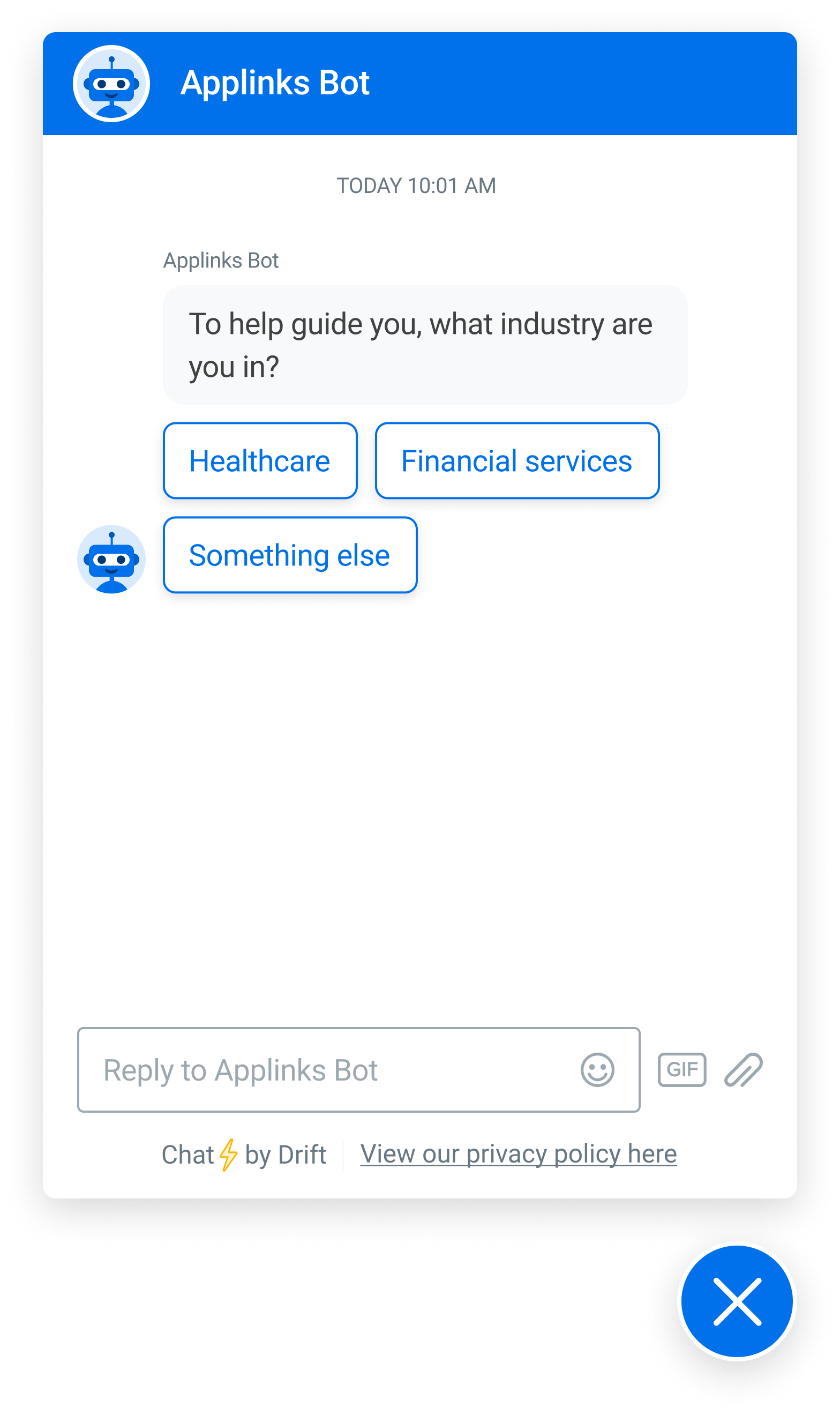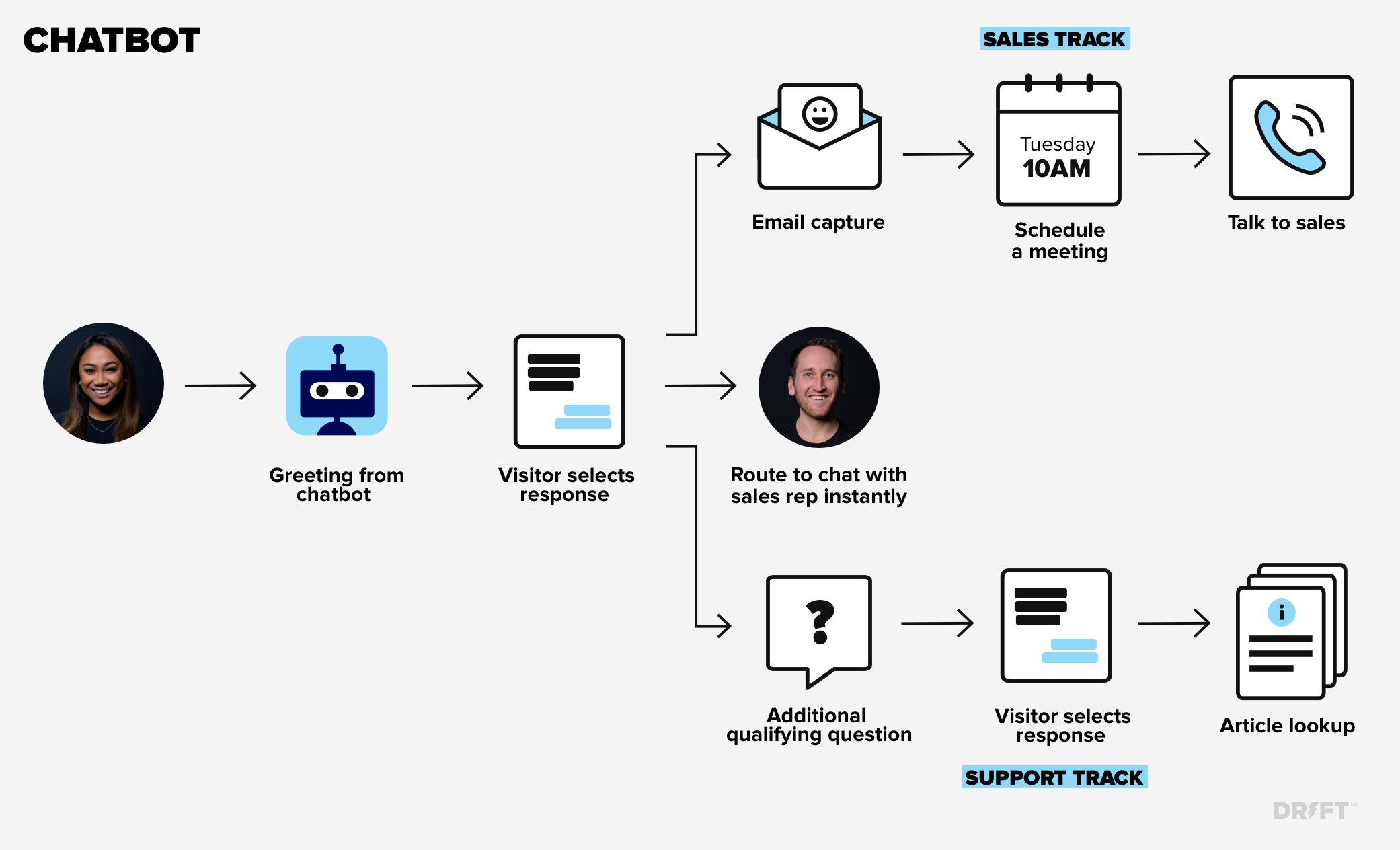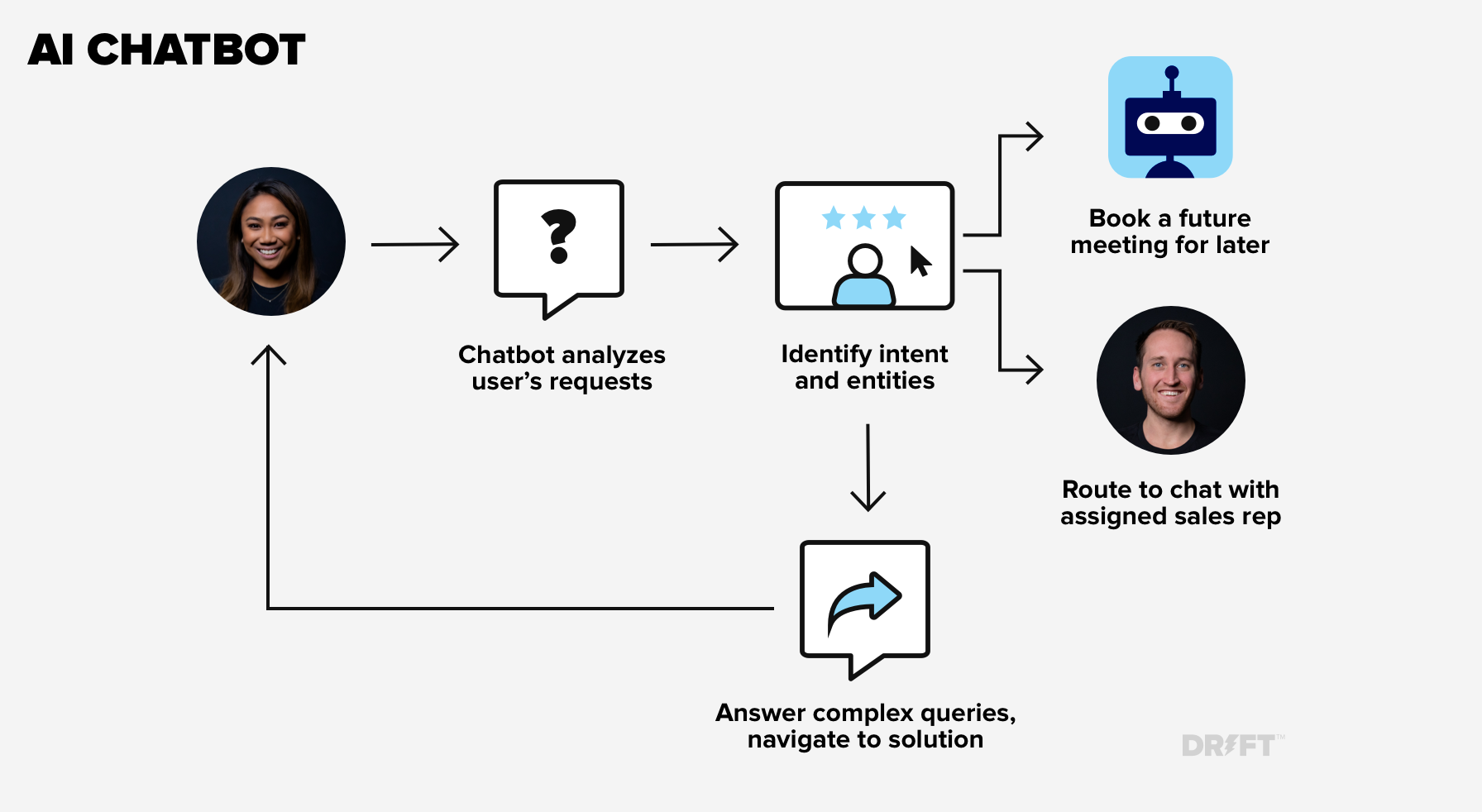When you walk up to a booth at a tradeshow, you don’t expect to be interrogated about who you are, which company you work for, your title, your role, your company revenue, and so on. You expect to have a meaningful, “human” conversation with smart reps who are interested in what you have to say and ready to provide you with the information you need. Ultimately, you hope to walk away with a better understanding of how they might be able to help you.
This is not an unreasonable expectation at a tradeshow. And it’s not an unreasonable expectation on a website either. Conversation marketing strategies and technologies give brands the ability to replicate helpful, organic conversations with prospects. And these kinds of conversations provide a better buyer experience that builds trust and sets the sales team up for success.
Case in Point: Oracle Kicks MQLs to the Curb
At the 2019 SiriusDecisions Summit, Dave Ewart, Oracle’s head of digital marketing and demand generation, told the story of how Oracle’s SVP of Sales said he didn’t want his sales team spending any time qualifying MQLs because it was a waste of valuable time.
Though he was new to Oracle, Dave was ready with a counter-offer. “What percentage of conversation-ready leads would you accept?” he asked.
The SVP didn’t hesitate, “100 percent.”
Over the last few years, Oracle has transformed its marketing funnel through an initiative called CoRe, which stands for Conversation-Ready. They distinguish core leads (or CRLs) from non-core leads as “qualified responses with intent to have a conversation.” The result: Oracle dramatically reduced leads being sent to the BDR and sales teams while significantly increasing results in terms of opportunities, pipeline acceleration, and conversion rates.
To be clear: fewer leads resulted in more sales opportunities.
Why does this work?
- CRLs are ready to talk. These hand-raisers have proactively engaged the company via live chat, an 800 number telesales line, or a direct request for a trial, demo, or meeting.
- Non-CoRe leads are not (quite) ready to talk. Non-CoRe leads have typically engaged in more traditional demand gen behaviors like downloading whitepapers, attending events, or signing up for newsletters or webinars. They may still be in research mode, so they are farther away from making a decision.
- CoRe leads convert better. What’s most interesting to marketing and sales teams alike is that there’s quite a large differential in the conversion ratio from a core lead to a qualified opportunity with the associated pipeline. CoRe leads simply convert at a much higher rate than non-CoRe leads.
While Oracle focuses on increasing the volume of CRLs, they acknowledge that there’s a limited number of conversation-ready buyers in the market at any given time. Because of this, they continue to generate non-CoRe leads through traditional marketing activities. These secondary leads fill the top of the funnel, and then marketing nurtures those buyers through the awareness and consideration phases of the buyer’s journey.
Non-CoRe leads represent the highest volume of leads in their marketing funnel, at over 80%, but their role is different. Oracle marketers no longer consider these non-core leads as ready for the handoff to sales. Instead, they focus on nurturing them to become CoRe leads that will be much more valuable to the sales team.
Why MQL Processing Delays are an Opportunity Killer
In addition to understanding the difference between CoRe and non-CoRe leads, Oracle knows that time is the most valuable commodity to both buyers and sellers.
How you treat your buyer’s time makes a huge difference in lead generation outcomes. Let’s consider two possible scenarios as an interested buyer visits a product website:
Scenario 1: Your ideal prospect, Applinks, arrives on your website and completes a form
Applinks’ technical decision-maker is in full research-mode because her executive team gave the green light on a major new initiative. Your company has a perfect solution for their problem, but she’s not quite ready to commit to a 30-minute sales conversation. She’s just researching, gathering ideas from vendor websites.
This decision-maker is impressed enough by your content to complete a form to download a whitepaper developed by your product marketing team. Her information gets processed according to the traditional MQL process, and, 24 hours later, she receives a generic follow-up email from a BDR with little industry expertise.
Now, with the odds stacked against you, the BDR begins the cat-and-mouse game of trying (often unsuccessfully) to get this high-value prospect to schedule a discovery meeting.
It’s a cringe-worthy situation.
Scenario 2: Your ideal buy arrives on your competitor’s website and a chat window pops up
Next, imagine the Applinks buyer landing on your #1 competitor’s homepage. This time, instead of a form, a chat window powered by chatbot technology pops up with a personal greeting:
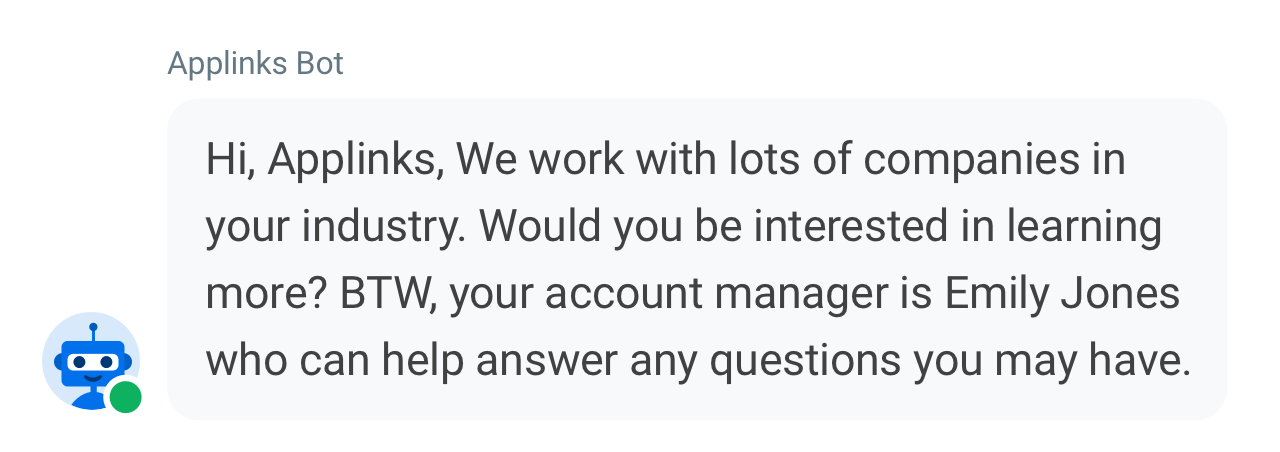
The decision-maker engages in the chat. Based on her inquiries and responses, the bot offers the decision-maker case studies and other content relevant to her vertical industry.
Next – having been alerted by the chatbot – the company’s sales rep joins the chat to answer the decision-maker’s top three to four technical questions. Satisfied with the sales rep’s responses (and impressed by how personal and easy the process has been), Applinks’ buyer responds:

Emily, the sales rep, gives her a choice of two options:
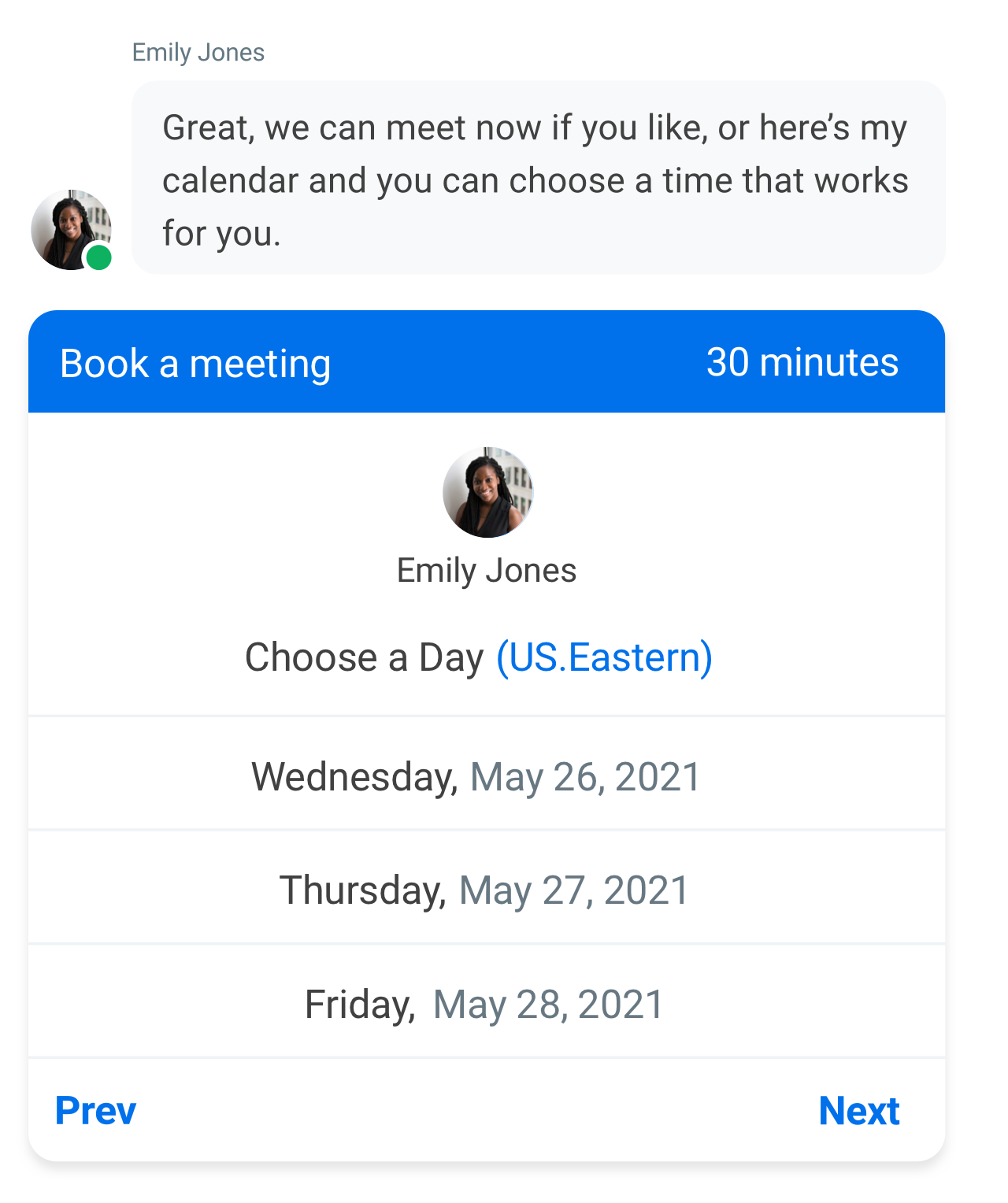
Emily and the decision-maker have a meeting that afternoon, and Emily opens an opportunity for $100K by the end of the day.
But what happens if Emily isn’t available to respond? In many cases, rule-based chatbots are great at managing “this” or “that” questions. Rule-based chatbot software responds based on predetermined actions built into chat playbooks. In several cases, rule-based chatbots can be linked to a sales rep’s calendar to book future meetings for buyers.
But your competitor went one step further. Not only do they want to facilitate buyer conversations outside 9 to 5 work hours (and provide bandwidth support for reps) – but help all visitors answer their questions – big and small.
That’s why the competition also leans on artificial intelligence to help Emily and her buyers. Specifically, AI chatbots. An AI chatbot can answer more complex queries. For example:

Meanwhile, your whitepaper download-triggered MQL is sitting in a BDR’s queue – because they only qualify whitepaper leads between 9 and 10 each morning. And your MQL arrived at 11 am.
You don’t know it, but you’ve already lost this deal to the competition.














